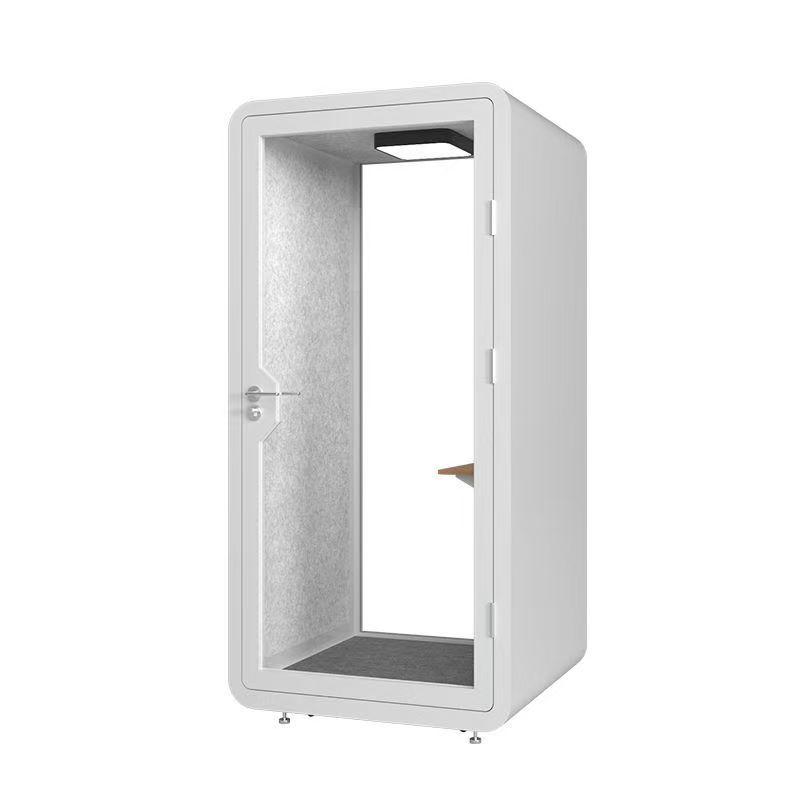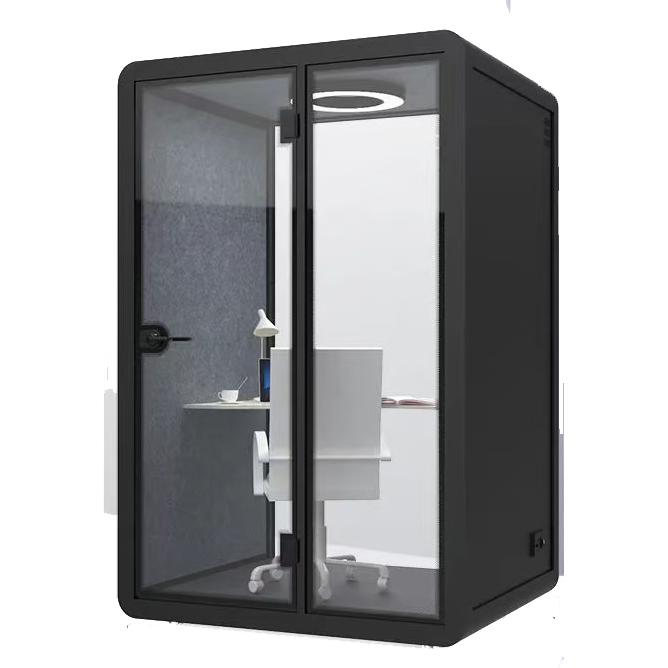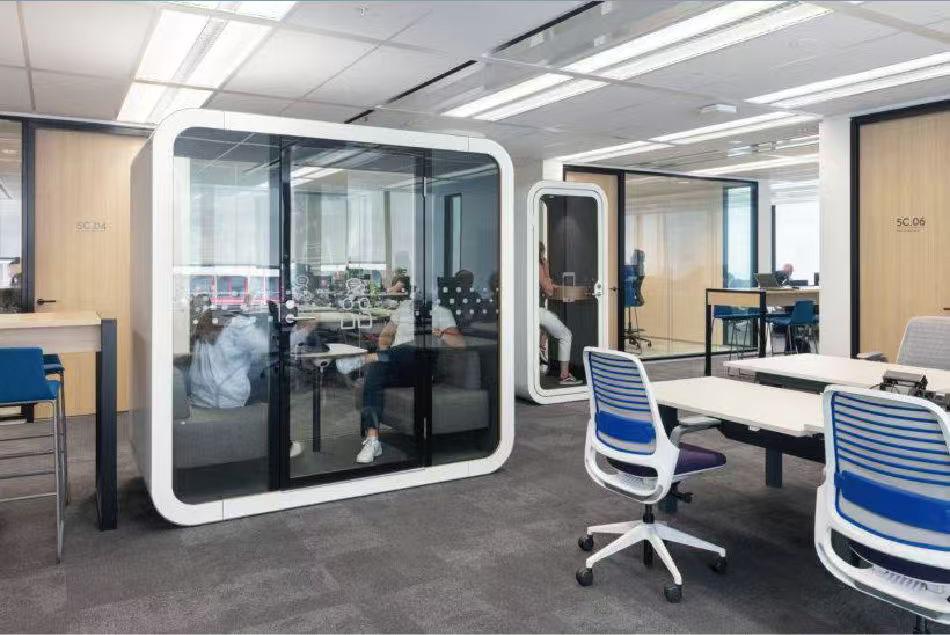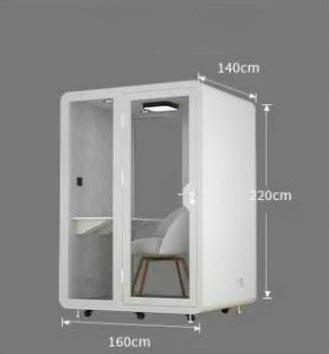Author:SOP Work Pods Manufacturer TIME:2025-02-25
In today's open-plan office environments, achieving privacy and quiet spaces has become a growing challenge. The rise of the office phonebox offers a simple yet effective solution to this issue, providing employees with a private, enclosed area to make phone calls or hold confidential meetings. However, while these phone boxes are designed to reduce noise, their soundproofing capabilities can vary. This article explores the different ways you can enhance the soundproofing of your office phonebox, ensuring it provides the quiet space employees need for a productive and focused workday.

The primary function of an office phonebox is to provide a quiet, secluded area where employees can focus on their tasks, make important calls, or attend virtual meetings without interruptions. However, open office layouts with high foot traffic and surrounding noise can diminish the effectiveness of these phoneboxes. Without proper soundproofing, outside noise can intrude, and internal noise can escape, disturbing colleagues nearby. Enhancing soundproofing ensures both privacy for the user and a quieter work environment for the entire office.
To improve sound isolation, start with high-quality acoustic panels. These panels, made from dense materials such as foam or fiberglass, are ideal for absorbing sound and reducing reverberation inside the phonebox. Placing acoustic panels on the walls, ceiling, and even the door can significantly improve the acoustic performance of the space.
For superior soundproofing, consider materials like heavy-duty fiberglass or soundproof glass for the construction of the walls and windows. These materials are particularly effective at blocking external noise, helping create a more tranquil space within the office. Laminated glass windows, for example, are better at isolating noise compared to regular glass.

Even the smallest gaps around the door and windows of an office phonebox can let sound leak through, compromising the phonebox’s quiet environment. Sealing these gaps is essential for improving noise isolation. Installing weatherstripping or acoustic door seals around the edges of the door and window frame can drastically reduce sound leakage. This simple step can make a noticeable difference in the phonebox's performance.
The door is one of the most vulnerable points for sound leakage in an office phonebox. A standard door may not offer sufficient noise isolation. To upgrade, consider opting for a solid-core door, made from materials such as solid wood or metal, which are much better at blocking sound compared to hollow-core doors. Additionally, adding a door sweep at the bottom of the door can further prevent sound from escaping or entering.
While walls and ceilings are the primary focus of soundproofing, the floor of an office phonebox can also contribute to noise control. Hard flooring materials like concrete or wood can reflect sound, creating unwanted noise within the box. To address this, consider installing soundproof flooring solutions such as thick carpets or acoustic underlayment. These materials help absorb sound and provide a more comfortable and quieter environment inside the box.
Sometimes, the noise outside the office phonebox can be overwhelming, especially in bustling office environments. To reduce external noise, consider additional soundproofing measures for the surrounding area. Installing sound-absorbing panels or using heavy curtains around the phonebox can minimize the noise that filters in from nearby. These external soundproofing solutions can help create a quieter zone around the phonebox, ensuring its effectiveness as a private space.

For offices requiring the highest level of sound isolation, hiring professional soundproofing services might be the best option. These specialists can evaluate the office's acoustics and recommend the best soundproofing solutions. They may install advanced materials like mass-loaded vinyl or custom-designed acoustic barriers that provide superior noise isolation. Though more expensive, these services are ideal for companies that need to ensure confidentiality and privacy in phone calls or meetings.
Despite the built-in soundproofing features of most office phoneboxes, there are situations where additional soundproofing is necessary. As office environments become increasingly noisy, with open spaces, high-tech devices, and bustling staff, the noise level can exceed what typical phoneboxes can block. Additionally, employees involved in sensitive discussions may require extra soundproofing to ensure privacy. In these cases, investing in additional soundproofing upgrades will enhance both productivity and privacy.

To determine whether the soundproofing in your office phonebox is sufficient, conducting acoustic testing can be an invaluable step. Acoustic testing measures how much sound escapes the box and how much noise enters from the outside. The results can help identify weak spots where additional materials or changes to the structure may be needed. Testing can also ensure that your soundproofing efforts are cost-effective and targeted.
In conclusion, while office phoneboxes provide a valuable space for privacy and quiet in open-plan offices, their effectiveness in soundproofing can vary. By upgrading materials, sealing gaps, enhancing the door, and considering external soundproofing solutions, you can ensure that your phonebox office meets the desired privacy standards. Whether through DIY measures or professional assistance, investing in enhanced soundproofing will ultimately create a more productive and comfortable workspace for your team. As privacy and quiet spaces become even more crucial in modern work environments, improving the soundproofing of your office phonebox is a step toward a better office design.